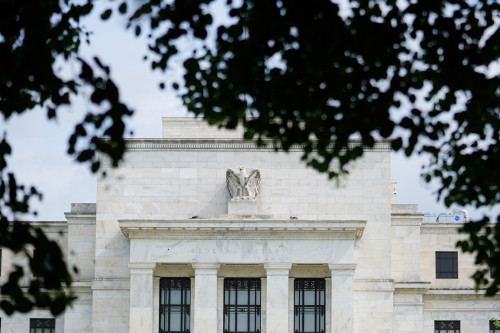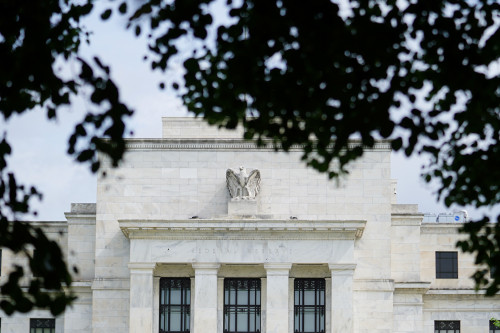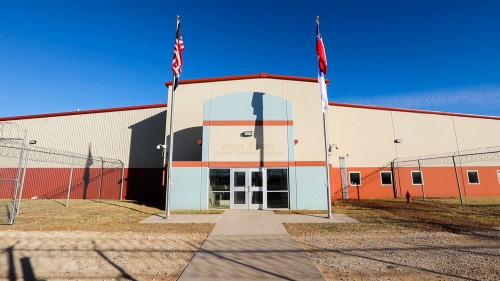By Karen Brettell
NEW YORK (Reuters) – A weakening economy and what looks to have been an overly aggressive “Trump trade” has led some Treasury market participants to reevaluate calls for how high U.S. yields will go as speculation the Federal Reserve may cut rates several times this year re-emerge.
Yields tumbled after data on Friday showed U.S. business activity nearly stalled in February, while consumer fears about inflation surged. Data on Monday further showed U.S. consumer confidence deteriorated at its sharpest pace in 3-1/2 years in February.
Government job cuts by Elon Musk’s Department of Government Efficiency (DOGE) are raising fears they will lead to a weaker labor market and hit consumer spending. The Citigroup economic surprise index also fell further into negative territory, indicating data is coming in worse than economists predicted.
Peter Tchir, head of macro strategy at Academy Securities, has cut his target on 10-year Treasury yields to 4.6%, after formerly expecting 4.8% or higher, and said “I’m beginning to think that that might even be too high.”
“It does feel like this growth prospect isn’t materializing,” Tchir said. “There’s so much noise coming out of DC, or Mar-a-Lago, that it’s hard to tell what to focus on,” he said referring to President Donald Trump’s Florida resort and residence. “But I feel like everything now is giving people pause and hesitancy and it doesn’t take long for that to feed into the economy or market.”
Trump’s election in November raised expectations for stronger economic growth on looser business regulations and the potential for more tax cuts. Tariffs and a crackdown on illegal immigration, meanwhile, are seen as potentially adding to inflation.
Data from December reinforced the perception of a robust economy, which along with inflation concerns prompted the Fed to pause the easing cycle that brought its policy rate down a full percentage point since its initiation in September.
That sent Treasury yields higher and led investors to cut bets on how many times the Fed will cut rates this year.
The benchmark 10-year yield traded as low as 3.60% in September before traders began pricing in higher odds of a Trump victory. It reached 4.81% in January, a 14-month high and was at 4.31% on Tuesday.
Now, some analysts say benefits of Trump’s fiscal shifts may take longer to be realized. And DOGE’s cost cutting, while potentially improving the fiscal picture longer term, could hurt the economy in the shorter run.
“The risk in the short term is that many of the layoffs that the federal government has undertaken in the last four weeks create a short-term downdraft in consumer spending, and that expands into more material economic slowing,” said Guy LeBas, chief fixed income strategist at Janney Montgomery Scott.
“The stimulative plans from tax cuts and so forth will take much longer, if not years, to add to the economy, and so there’s a little bit of a timing problem with how fiscal policy is evolving right now that could cause a slowdown,” LeBas said.
Fed funds futures traders are now pricing in at least two 25 basis point cuts this year, after seeing only a roughly 50/50 probability of a second cut early last week.
Some of the recent drop in yields has come from other factors that are more favorable for the market. These include U.S. Treasury Secretary Scott Bessent’s statement that there are no near-term plans to increase long-term debt issuance, and a discussion by Federal Reserve officials about a possible pause or taper to its quantitative tightening program.
Market moves have also so far been orderly and are not yet reflecting panic about an imminent recession as traders wait for more clarity around tariffs and the strength of the labor market.
“I’d say the US economy continues to slowly slow, which is a key reason that you’re seeing yields chopping around here and not really plunging,” said Emily Roland, co-chief investment strategist at John Hancock Investment Management.
“You saw excitement around America First policies – deregulation, potential for lower taxes,” she said of the run up in yields around the election. “We are seeing a bit of a reversion there as we have more evidence that it’s going to take time for clarity around some of these policies.”
(Reporting By Karen Brettell; Editing by Alden Bentley and Nick Zieminski)






